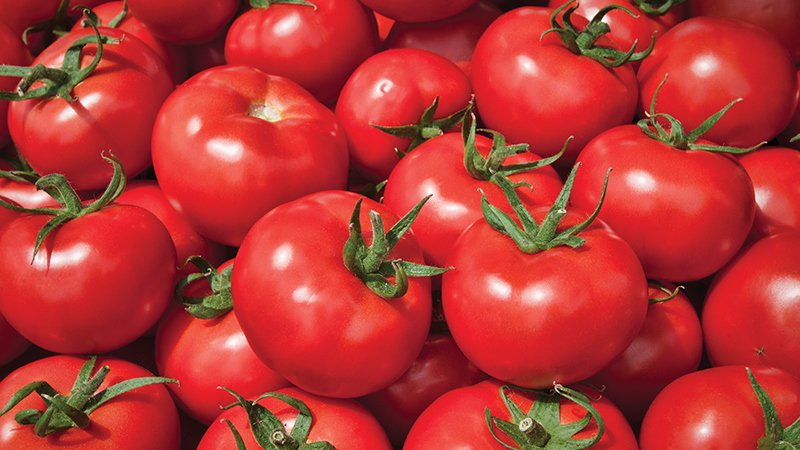Researchers Identify Sources For Boosting Flavor In Tomatoes
Tomatoes are a $2 billion crop in the U.S., but a common complaint is that the varieties in supermarkets often lack the flavor of locally grown varieties. To improve flavor, breeders need to know more about the types of tomatoes that hold the greatest potential for enhancing taste.
USDA molecular biologist Joanne Labate and plant geneticist Larry Robertson of Geneva, NY, worked with Dilip Panthee of North Carolina State University to explore tomatoes’ diversity in a study designed to help breeders develop tastier tomatoes.
Labate and Robertson work at the Agricultural Research Service (ARS) Plant Genetic Resources Unit at Geneva. The team raised 173 varieties on test plots in North Carolina, trained 10 volunteers in sensory analysis, and asked them to rate the varieties on a scale of one to five in four sensory areas: odor, taste, flavor, and texture. The varieties were selected from the approximately 6,000 accessions in the ARS Tomato Germplasm Collection in Geneva because they represent a cross-section of the world’s tomato diversity.
The results, published in Plant Genetic Resources: Characterization and Utilization (2013), represent one of the most comprehensive efforts to date for identifying sources for boosting flavor among commercial varieties and lines used for breeding. They also are a treasure trove for breeders, offering a comprehensive set of rankings on flavor qualities, sweetness, vitamin C content, sugar and acid content, and other characteristics.
The findings show that although thousands of compounds go into determining flavor and other characteristics, two components play a key role: the amounts of sugar and acid. There also was a positive correlation between sweetness and flavor. The sweeter the tomato, the more flavor it contained.
The findings are good news for breeders because they show a lot of variation and a broad range of possibilities for adjusting sugar levels and developing more flavorful tomatoes. Breeding to enhance flavor shouldn’t be that difficult because both sugar and acid content can be reliably and inexpensively measured, according to the researchers.
Read more about this research in the October 2013 issue of Agricultural Research magazine.









